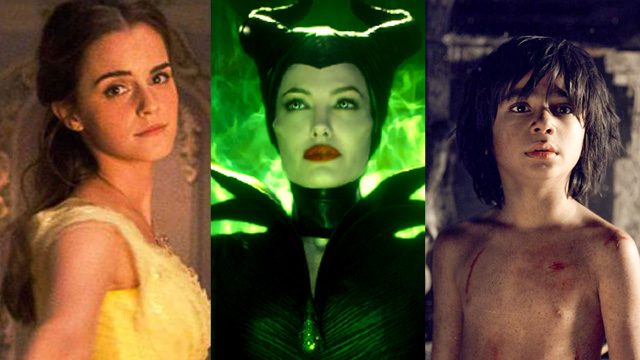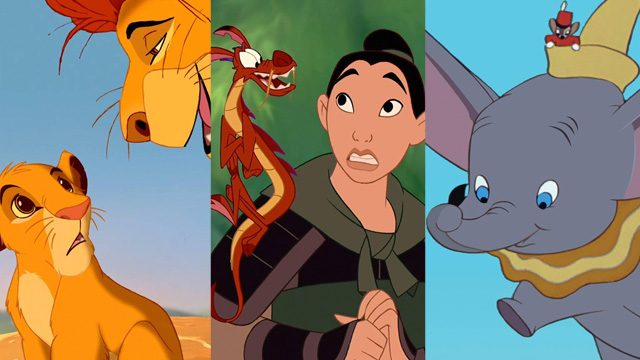SUMMARY
This is AI generated summarization, which may have errors. For context, always refer to the full article.

Disney’s live-action version of Beauty and the Beast (2017) was a huge success, and it certainly isn’t the last of the studio’s remakes. At D23 Expo 2017 in July, the studio announced many more live-action versions of their beloved animated classics, including Mulan, Dumbo, Aladdin, and The Lion King.
The remakes seem like a no-brainer; they certainly bring in the money – Beauty and the Beast reportedly cost $300 million to make and market, but it’s earned that many times over with $1.2 billion in the worldwide box office.
But as 3 Walt Disney executives told journalists at the Fantasia Theater at Disney’s Burbank offices a few days before 2017’s D23 Expo, more thought goes into these movies than meets the eye.
Choosing the stories
For Sean Bailey, president of Walt Disney Studios Motion Picture Production, the live-action remakes – as cliché as he admits it sounds – are driven by quality.
In this case, “quality” can mean different things. For example, the driving force for Disney’s 2014 live-action Sleeping Beauty movie, Maleficent, was Angelina Jolie’s participation as the eponymous evil fairy.
For The Jungle Book (2016), it was only after initial research and development that they decided they could pull off the creative and technological challenges that the film presented.
“We are making Dumbo now, we just started shooting in the United Kingdom. If not for Tim Burton directing that movie, I don’t think we’d make that movie,” said Sean of the upcoming 2019 film.
Creating sequels
The same cautious decision-making is the reason Disney doesn’t produce sequel after sequel of their beloved classics. Beauty and the Beast, he said as an example, feels closed-ended.
“There may be another part of the world to explore, someone may have an inspiration of a Maleficent-like different way to approach the idea, but we also don’t feel a compulsion that just because a movie had tremendous success that we have to sequel a movie. It may be, for movie screens, that story has been told,” said Sean.
This approach to sequels applies to their animated movies too, and to movies that have been made into TV shows.
Speaking about Disney Channel’s Tangled series, a spin-off of their Rapunzel movie, Disney Channel’s Nancy Kanter said that her teams ask themselves, “Do we really feel there is way to expand this into multiple stories that can live on and on?”
Walt Disney Animation Studios President Andrew Millstein presented another perspective to making sequels for animated films – because these can take 5 to 7 years to make, the filmmakers do get tired of working on the same worlds and characters too. “While it may seem a logical business decision to make a sequel to Frozen, the film makers themselves needed to take to break, literally, from that world and those characters,” said Andrew.

‘Paralyzing fear’
It could be nerve-wracking to make new versions of the classics, because they’re exactly that – classics we’ve all cried and laughed to, and we’ve sung our way through their songs as children and adults.
“I will never admit to a ‘paralyzing fear’ [of recreating classics],” Sean said with humor, quoting a journalist who had asked the 3 about it.
The studio takes on these projects with caution. The production of some movies like The Lion King, he said, had to wait: “We aren’t gonna take Lion King on first out of the gate, you know? We had to build up both some thinking about how we do these [and] learn from the audience as these movies went out into the world.”
The Lion King is being worked on by the same team that did The Jungle Book, which won the Academy Award for Best Visual Effects in 2016.
Whether on the big screen or on TV, coming up with new material and content for an old Disney movie takes preparation. Speaking about Disney Junior’s Lion King spin-off The Lion Guard, Nancy said: “I think we started off saying you begin with this respect, and this appreciation, and this responsibility for the original, and then it’s the creative challenge. It’s bringing the right people together, it’s finding the right story that very much recognizes what the legacy is and where it comes from and if we can’t do it, we don’t do it.”
Contemporizing fairytales
Disney princess stories, in particular, pose an interesting challenge when it comes to remakes.
As movies like Moana and The Princess and the Frog show, Disney’s 21st century princesess take on a more active role in deciding their fate. Moana (voiced by Auli’i Cravalho) leaves her island home to save her people, despite their fear of sailing into open sea. In The Princess and the Frog, the enterprising Tiana (Anika Noni Rose) works hard to set up her own restaurant.
But live-action retellings of Cinderella (1950) and Beauty and the Beast (1991) are altered slightly to reflect modern values.
Sean recalled that the first drafts of 2015’s Cinderella were completely different:
“She got thrown across the kingdom, she had armor, she had a sword, she met a rogue knight, she fought mythical beasts, fighting her way back to the prince.”
“And at a certain moment, we had a conversation where we said, ‘Are we outhinking ourselves here?’ … In the original story, we do consider her, in our current terms, to be a little too passive, a little too submissive. She walked into the ball, she was the prettiest girl, the prince saw her, and then she got to live a life of leisure, waited on by handmaidens. We didn’t like that, we didn’t wanna do that. But then we thought, by trying to give her masculine traits, is that how we want to do this? Because if we were talking about a male character that resisted through decency, that was not submissive but had strength in their kindness, and always took the higher ground when people attack them low, if we were talking about Martin Luther King or Ghandi, we wouldn’t be having this conversation.”
The resulting movie stuck to the original tale and its visuals – the blue dress, the glass slipper – but had a few tweaks: the prince meets Cinderella before the ball, which gave him a reason to throw one in the first place and let him recognize her later.
Similarly, 2017’s Beauty and the Beast kept to the original, but had Belle (Emma Watson) teaching a little girl how to read and using a makeshift washing machine at the village well, to the disapproval of those in her rural French village (at around the 6:20 mark in the video below).
Many more favorites are set to be redone and released by Disney in the coming years, including Robert Stevenson’s Mary Poppins (1964). And while they’re sure to earn their keep in the box office, it’s up to fans to decide their true success – whether or not they live up to – or surpass – the stories they grew up with. – Rappler.com
Add a comment
How does this make you feel?
![[In This Economy] A counter-rejoinder in the economic charter change debate](https://www.rappler.com/tachyon/2024/04/TL-counter-rejoinder-apr-20-2024.jpg?resize=257%2C257&crop=267px%2C0px%2C720px%2C720px)
![[Vantage Point] Joey Salceda says 8% GDP growth attainable](https://www.rappler.com/tachyon/2024/04/tl-salceda-gdp-growth-04192024.jpg?resize=257%2C257&crop_strategy=attention)
![[ANALYSIS] A new advocacy in race to financial literacy](https://www.rappler.com/tachyon/2024/04/advocacy-race-financial-literacy-April-19-2024.jpg?resize=257%2C257&crop_strategy=attention)


There are no comments yet. Add your comment to start the conversation.